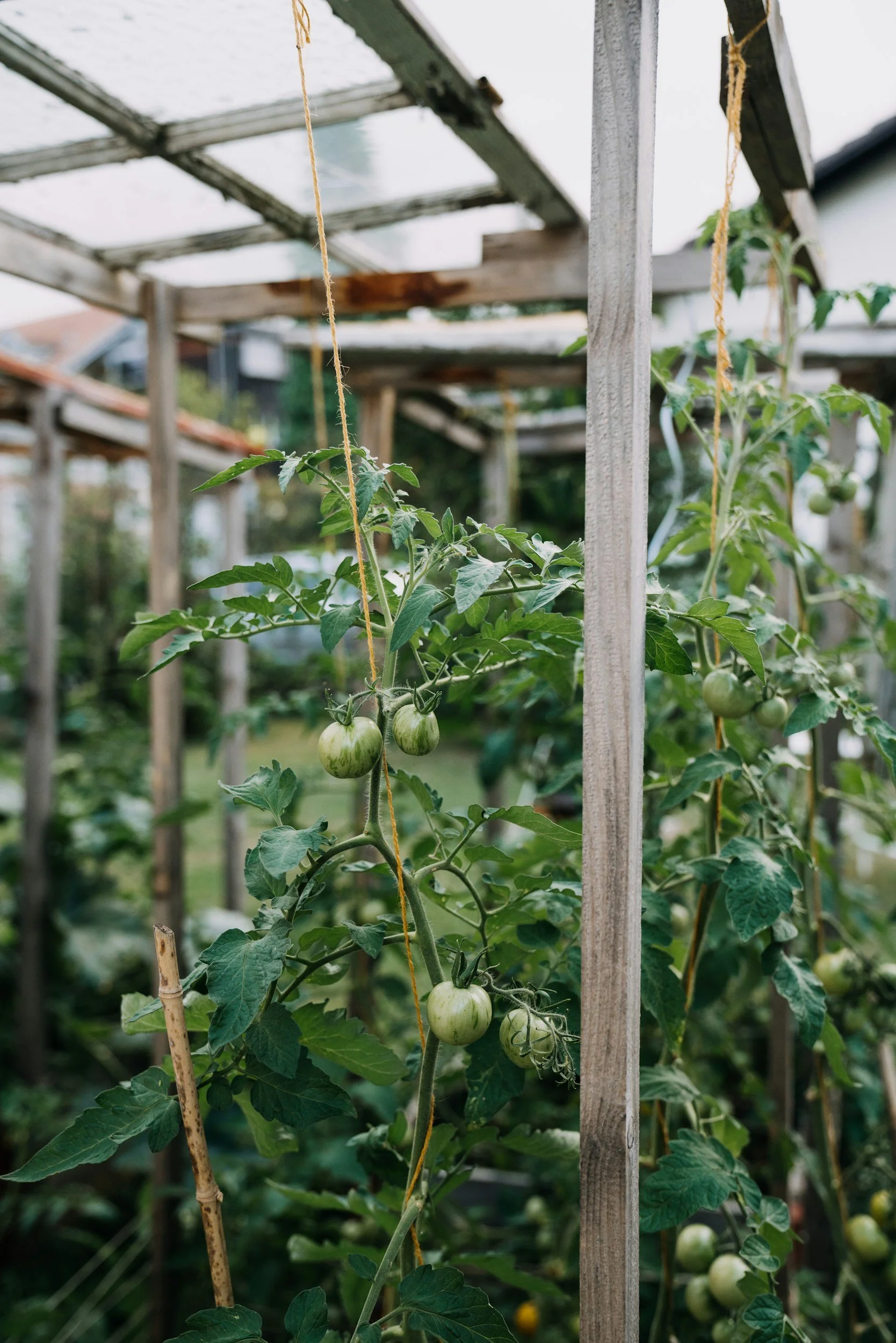Tending the Warmth
The long light of June stretches across our gardens now, gilding leaves and lengthening the hours we spend with our hands in the soil. There's a hush and a hum this time of year—the hush of deepening roots, of soil busy with unseen work, and the hum of bees and humans both, drawn to bloom and promise. Summer is stirring, and so are we.
In Western Washington, we often say we garden in spite of summer. It comes late and lingers unevenly, teasing us with days of warmth before retreating behind June's marine layer. Still, we go on planting, trellising, watering. We sow the seeds of future meals and memories. And we tend to our tomatoes with a hopeful heart.
The Tomato Prayer
Tomatoes, more than most crops, evoke devotion. In the Pacific Northwest, growing a ripe tomato outdoors is a kind of seasonal pilgrimage. These sun-loving, heat-seeking plants ask much of us in return for their sweetness. They are not content to be left alone. We hover, we adjust, we encourage them on with trellises, cloches, and whispered prayers.
We know that getting fruit to ripen here is an art and a dance with the weather. Begin with early or determinate varieties bred for short seasons. Choose your sunniest spot and amend the soil deeply, giving tomatoes a foundation rich in phosphorus and potassium but modest in nitrogen. Overfed leaves do not feed us back.
Trellis them early. Keep air moving through their leaves. And prune indeterminate types to just a few stems, so the fruit set is focused and within reach of the season’s end. Every blossom is a promise—but not every promise will ripen. By mid-August, we remove any lingering flowers, letting the plant turn its final energy toward coloring the fruit it already carries.
And then, in late summer, we begin to hold back water. A little stress deepens sweetness. Ripening, after all, is about transition. It is about letting go.
June Tasks of Care
Alongside the tomatoes, the rest of the garden pulses with potential. Now is the time to:
Continue sowing successions of beans, carrots, and beets to stagger harvests.
Transplant heat-lovers like tomatoes, peppers, eggplants, ground cherries, and squash family plants. Early June is your window.
Trellis cucumbers, melons, and peas before they sprawl and tangle.
Water deeply and consistently, especially in containers and newly planted beds.
Harvest and re-bed your worm bin, returning that dark, finished compost to garden beds.
Sow buckwheat or phacelia as summer cover crops in spots you’ll use for fall planting. Their brief lives feed the soil and feed the bees.
These are not chores. These are invitations—to observe more closely, to participate more fully, to receive more deeply.
Eco-Restore in the Garden with You
At Eco-Restore, we walk with gardeners through each season, offering vision and grounded guidance. We help you shape your site into something both fruitful and forgiving, a place where effort meets ease. From designing your kitchen garden to checking in with quarterly coaching, we’re here for the slow solutions that truly take root.
Need help fine-tuning your summer planting plan? Curious about incorporating cloches or planning for fall crops now? Let’s talk. A visit, a conversation, a few well-placed suggestions—that’s how transformation begins.
This June, may your days be long, your water well-timed, and your tomatoes ripen like the prayers they are.


